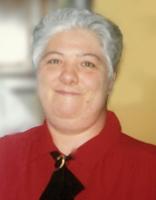PLATTSBURGH — Sophie Macner knew Hazel wasn’t acting like herself.
For nearly three years, the Plattsburgh teen and her horse had trained on a regular basis. The two had placed well during the 2014-15 4-H horse shows.
But then the 13-year-old American Paint pony had begun demonstrating a few odd behaviors. Hazel, a mild mannered, good-natured mare, had begun shaking and flicking her head repeatedly during their rides.
“I didn’t know what was going on or why she was doing it,” Sophie said. “It wasn’t like her to behave this way.”
Hazel began to rub her forehead on whatever she could find — Sophie’s leg, a fence post, anything. The sporadic actions became distracting and difficult to manage.
By August 2015, Sophie stopped riding Hazel altogether.
INTENSE PAIN
In January, Hazel was diagnosed with trigeminal nerve neuralgia, or TN. Studied extensively in humans, TN produces regular bouts of intense facial pain.
It’s only been within the last decade that veterinarians have discovered the rare disorder affects animals, too.
Sophie’s mom, Sharon, said that getting Hazel properly diagnosed was a long, difficult and stressful process. For months, they struggled on their own to understand the mysterious symptoms.
Admittedly not a “horse person,” Sharon began to ask questions of those who are. Initially, she was told that Hazel was being “bad” and that Sophie needed to correct the horse.
“The first instinct is to correct the (horse’s) behavior,” explained Sharon. “It was quickly apparent that you couldn’t correct this behavior. And when you tried to correct the behavior, it got worse.”
SYMPTOMS PERSISTED
After consulting their local veterinarian, they began to learn more about “head shaking” in horses. All horses shake their heads to rid themselves of flies, dust or a minor discomfort, such as sensitivity to sunlight.
When the behavior is persistent and becomes potentially dangerous, then it’s time to take a closer look.
The Macners were referred to veterinarian Dr. Toby Pinn at the Vermont Large Animal Clinic and Equine Hospital.
The vet ran a series of tests on Hazel, followed up by various treatments. A nose net was used to limit the amount of external stimulus the horse received and, when that didn’t work, Pinn prescribed medication.
The mare’s symptoms persisted.
“There became a suspicion that Hazel was demonstrating signs of trigeminal nerve neuralgia,” said Sharon.
When a “block” was placed on Hazel’s trigeminal nerve, her symptoms disappeared. The disorder diagnosed, they now needed a workable treatment.
“Without treatment, humans with this condition generally deteriorate,” explained Sharon.
“They endure bouts of severe pain simply by swallowing, smiling or breathing. It’s a very difficult condition to treat."
ELECTRODES
Sharon knew that TN in horses was a relatively new discovery and studies on the disorder were limited. She also knew that other horse owners had resorted to putting their animals down.
But Pinn told the Macners about an experimental treatment conducted by researchers in England on horses with TN.
A probe is placed just beneath the skin of a horse’s face and electrical stimulation delivered to the trigeminal nerve. The study showed promise, with a majority of the horses responding well to the treatment and returning to regular routine.
Pinn put the Macners in touch with Dr. Norm Ducharme, James Law Professor of Large Animal Surgery, Cornell College of Veterinary Medicine in Ithaca.
Ducharme had successfully implanted pacemakers in horses with recurrent laryngeal neuropathy, a condition that causes a progressive destruction of the nerve supply to the muscles of a horse’s larynx.
The pacemaker, which is surgically implanted in a horse’s throat, uses electrical stimulation to mimic the work of damaged nerves.
“(Dr. Ducharme) proposed a highly experimental surgery on Hazel in which electrodes would be implanted directly in contact with her trigeminal nerves,” said Sharon.
“The processor, with electrodes, would be implanted under her skin on her face.”
HARD CONVERSATION
As an audiologist, Sharon is well-versed in the use of electrical stimulation with her own patients. Cochlear nerve implants, an auditory version of the electrical stimulation unit used by Ducharme, helps people to hear.
“This was a dream situation, having a horse with signs that were obvious, repeatable and constant,” Ducharme said. “And you have someone who knows these (electrical stimulation) units because of their background.”
Sharon had faith in the procedure, but there were still the risks.
“This was a hard conversation for our family about whether to proceed,” she said. “We told Sophie, ‘We don’t know if this is going to work, and this is a large investment.’
"Initially, we said no.”
ONE-OF-A-KIND
In May 2016, Hazel became the first horse in the world to receive an electrical stimulation unit implant to reduce the symptoms of TN.
Hazel remained at Cornell’s equine hospital until she could be trailered to a stable near the Macners' Plattsburgh home. Since the surgery was one-of-a-kind, the treatment by Sharon and Sophie would be by trial and error.
The nerve stimulation unit consisted of three quarter-sized electronic processors. One was implanted in a natural cavity in Hazel’s forehead. The remaining two are external and act as transmitters delivering various milliamps of electrical stimulation.
Sharon’s job is to adjust the electrode settings, place the magnetic-equipped processor squarely on Hazel’s forehead and take notes on the horse’s response. It is a tedious and “learn as you go” process.
“I have to be slow and steady to figure out the stimulation (level)” she said. “How frequently do you (apply the stimulation?) How often? It’s going to take time to get the right process.”
Ducharme agreed.
“It will take a few years and many, many more horses (to claim success),” he said.
“We need to know a range of response. It will take us three or four years to figure out how long each treatment lasts or if there are any side effects."
INVOLUNTARY
If successful, the procedure could be game changing for the equine field.
“It will salvage some horses,” said Ducharme. “It will allow them to have a useful life for many years.”
Sharon said that if their experience saves just one horse, it will have been worth the effort.
“When a horse has head shaking or head flicking, there are several reasons why the horse could have that behavior,” she said.
“There are other disorders that can cause head shaking, but please do not think that your horse is being bad. It could be trigeminal nerve neuralgia, which is an involuntary reaction to severe pain that the horse cannot control.
"If you try to correct the horse's behavior, you will be putting that horse in greater pain.”
BEST FRIEND
Sophie thinks back to the Hazel she knew before this all happened.
“I’ve always admired Hazel for the well-mannered and talented pony that she is,” she said. “I’ve never met a horse that I have loved as much as her.
"The surgery was really important to me because I didn’t want to lose my best friend.”
























Commented
Sorry, there are no recent results for popular commented articles.